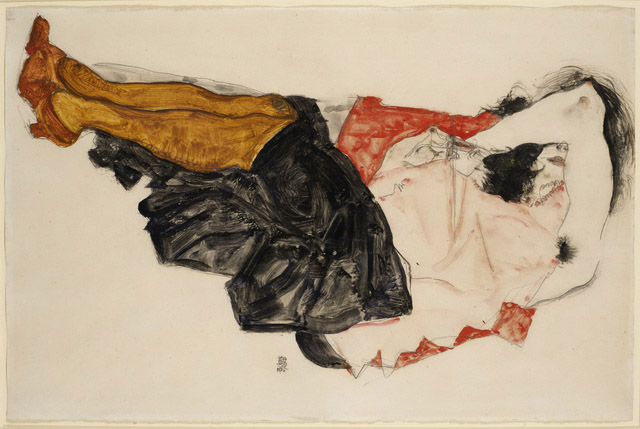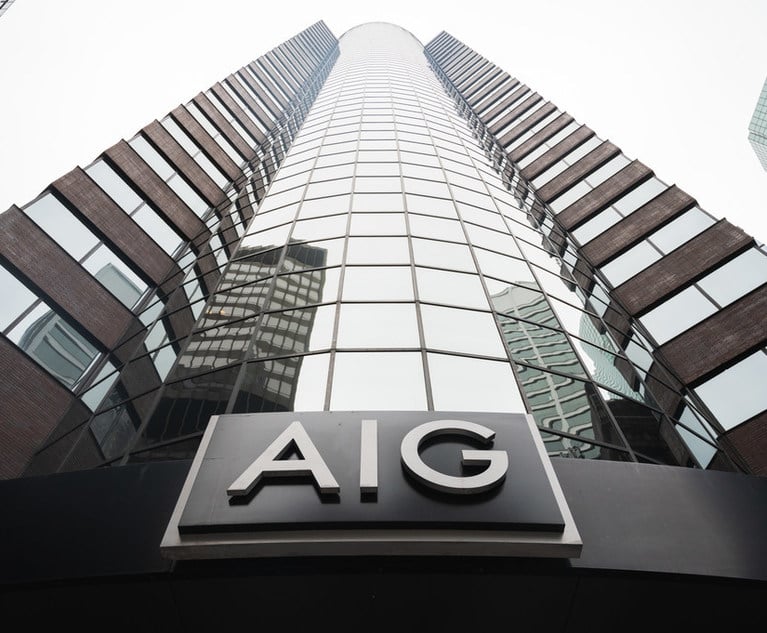UK Art Dealer Appeals Nazi Art Theft Ruling in New York
The lower courts' decisions would upend the New York art world if they were allowed to stand, art dealer Richard Nagy says.
February 11, 2020 at 06:35 PM
3 minute read
The original version of this story was published on New York Law Journal
 Egon Schiele, Woman Hiding her Face (1912).
Egon Schiele, Woman Hiding her Face (1912).
A London-based art dealer asked the New York Court of Appeals on Monday to hear his claim to a pair of century-old drawings by Austrian artist Egon Schiele, arguing that lower state courts' decisions would upend the New York art world if they were allowed to stand.
William Charron of Pryor Cashman, who is representing dealer Richard Nagy, argued that an earlier federal court case settled questions about rightful ownership of the drawings, which are part of a collection owned by a Jewish Austrian collector, Fritz Grunbaum, in the 1930s.
Grunbaum and his wife died in Nazi concentration camps during World War II, and their heirs sued Nagy in 2015, claiming ownership of the drawings.
The heirs' lawyer, Raymond Dowd of Dunnington Bartholow & Miller, argued that Nazis stole Grunbaum's art collection during the war.
But Charron argued that the question of the collection's history was already settled by federal courts between 2005 and 2013, when Dowd and the heirs pursued the rights to another Schiele piece from the same collection. The federal ruling should apply to all the pieces in the collection, he wrote in Monday's petition.
In the earlier case, Bakalar v. Vavra, the U.S. Court of Appeals for the Second Circuit found that the Nazis did not steal the drawing and that it was in the possession of Grunbaum's sister-in-law in the 1950s, when she sold it to a gallery. Charron represented the man who had bought the drawing in that case, too.
Charron emphasized in Monday's filing that the federal case involved "exhaustive international discovery," arguing that the federal ruling should apply to all the pieces in the collection, since there was little reason to believe they'd been split up. The Nagy case in state court, in contrast, never went to trial, Charron wrote.
The Court of Appeals must review the lower state courts' rulings, Charron wrote, because they created "novel rules" of collateral estoppel and laches that could affect a wide variety of art ownership cases in New York.
"The availability of the defenses of laches and collateral estoppel are critical to provide certainty to the New York marketplace, especially when dealing with collections of art and other property that may be sold in distinct parcels to multiple buyers," Charron wrote. He added that the fate of the rest of the collection—50 more Schiele drawings—was also thrown into uncertainty when the state and federal courts reached different conclusions.
The doctrine of collateral estoppel should have barred the re-litigation of issues settled in federal court, Charron argued, while Nagy's date of acquisition should have been irrelevant to his laches defense.
In response to a question about the appeal, Dowd said he is optimistic that the drawings will be auctioned at Christie's in November.
Read More:
NY Appeals Court Explains Why Nazi-Stolen Paintings Belong With Jewish Collector's Heirs
Jewish Heirs' Worldwide Fight to Reclaim Nazi-Stolen Art Plays Out in Manhattan Courts
This content has been archived. It is available through our partners, LexisNexis® and Bloomberg Law.
To view this content, please continue to their sites.
Not a Lexis Subscriber?
Subscribe Now
Not a Bloomberg Law Subscriber?
Subscribe Now
NOT FOR REPRINT
© 2025 ALM Global, LLC, All Rights Reserved. Request academic re-use from www.copyright.com. All other uses, submit a request to [email protected]. For more information visit Asset & Logo Licensing.
You Might Like
View All
UK Solicitors Regulator Sets Unusual Practice Conditions on AIG In-House Lawyer

Insurance Practice DWF Takes Team of 53 Lawyers From Australian Firm
2 minute read
A&O Shearman, White & Case Advise on €1.2B Public Takeover of German Steel Giant Salzgitter
3 minute read
Resolute Mining Appoints London General Counsel—CEO Resigns Following Foreign Detention
Law Firms Mentioned
Trending Stories
- 1Critical Mass With Law.com's Amanda Bronstad: 700+ Residents Near Ohio Derailment File New Suit, Is the FAA to Blame For Last Month's Air Disasters?
- 2Law Journal Column on Marital Residence Sales in Pending Divorces Puts 'Misplaced' Reliance on Two Cases
- 3A Message to the Community: Meeting the Moment in 2025
- 4Ex-Prosecutor Denies on Witness Stand That She Tried to Protect Ahmaud Arbery's Killers
- 5Latham's Lateral Hiring Picks Up Steam, With Firm Adding Simpson Practice Head, Private Equity GC
Who Got The Work
J. Brugh Lower of Gibbons has entered an appearance for industrial equipment supplier Devco Corporation in a pending trademark infringement lawsuit. The suit, accusing the defendant of selling knock-off Graco products, was filed Dec. 18 in New Jersey District Court by Rivkin Radler on behalf of Graco Inc. and Graco Minnesota. The case, assigned to U.S. District Judge Zahid N. Quraishi, is 3:24-cv-11294, Graco Inc. et al v. Devco Corporation.
Who Got The Work
Rebecca Maller-Stein and Kent A. Yalowitz of Arnold & Porter Kaye Scholer have entered their appearances for Hanaco Venture Capital and its executives, Lior Prosor and David Frankel, in a pending securities lawsuit. The action, filed on Dec. 24 in New York Southern District Court by Zell, Aron & Co. on behalf of Goldeneye Advisors, accuses the defendants of negligently and fraudulently managing the plaintiff's $1 million investment. The case, assigned to U.S. District Judge Vernon S. Broderick, is 1:24-cv-09918, Goldeneye Advisors, LLC v. Hanaco Venture Capital, Ltd. et al.
Who Got The Work
Attorneys from A&O Shearman has stepped in as defense counsel for Toronto-Dominion Bank and other defendants in a pending securities class action. The suit, filed Dec. 11 in New York Southern District Court by Bleichmar Fonti & Auld, accuses the defendants of concealing the bank's 'pervasive' deficiencies in regards to its compliance with the Bank Secrecy Act and the quality of its anti-money laundering controls. The case, assigned to U.S. District Judge Arun Subramanian, is 1:24-cv-09445, Gonzalez v. The Toronto-Dominion Bank et al.
Who Got The Work
Crown Castle International, a Pennsylvania company providing shared communications infrastructure, has turned to Luke D. Wolf of Gordon Rees Scully Mansukhani to fend off a pending breach-of-contract lawsuit. The court action, filed Nov. 25 in Michigan Eastern District Court by Hooper Hathaway PC on behalf of The Town Residences LLC, accuses Crown Castle of failing to transfer approximately $30,000 in utility payments from T-Mobile in breach of a roof-top lease and assignment agreement. The case, assigned to U.S. District Judge Susan K. Declercq, is 2:24-cv-13131, The Town Residences LLC v. T-Mobile US, Inc. et al.
Who Got The Work
Wilfred P. Coronato and Daniel M. Schwartz of McCarter & English have stepped in as defense counsel to Electrolux Home Products Inc. in a pending product liability lawsuit. The court action, filed Nov. 26 in New York Eastern District Court by Poulos Lopiccolo PC and Nagel Rice LLP on behalf of David Stern, alleges that the defendant's refrigerators’ drawers and shelving repeatedly break and fall apart within months after purchase. The case, assigned to U.S. District Judge Joan M. Azrack, is 2:24-cv-08204, Stern v. Electrolux Home Products, Inc.
Featured Firms
Law Offices of Gary Martin Hays & Associates, P.C.
(470) 294-1674
Law Offices of Mark E. Salomone
(857) 444-6468
Smith & Hassler
(713) 739-1250








